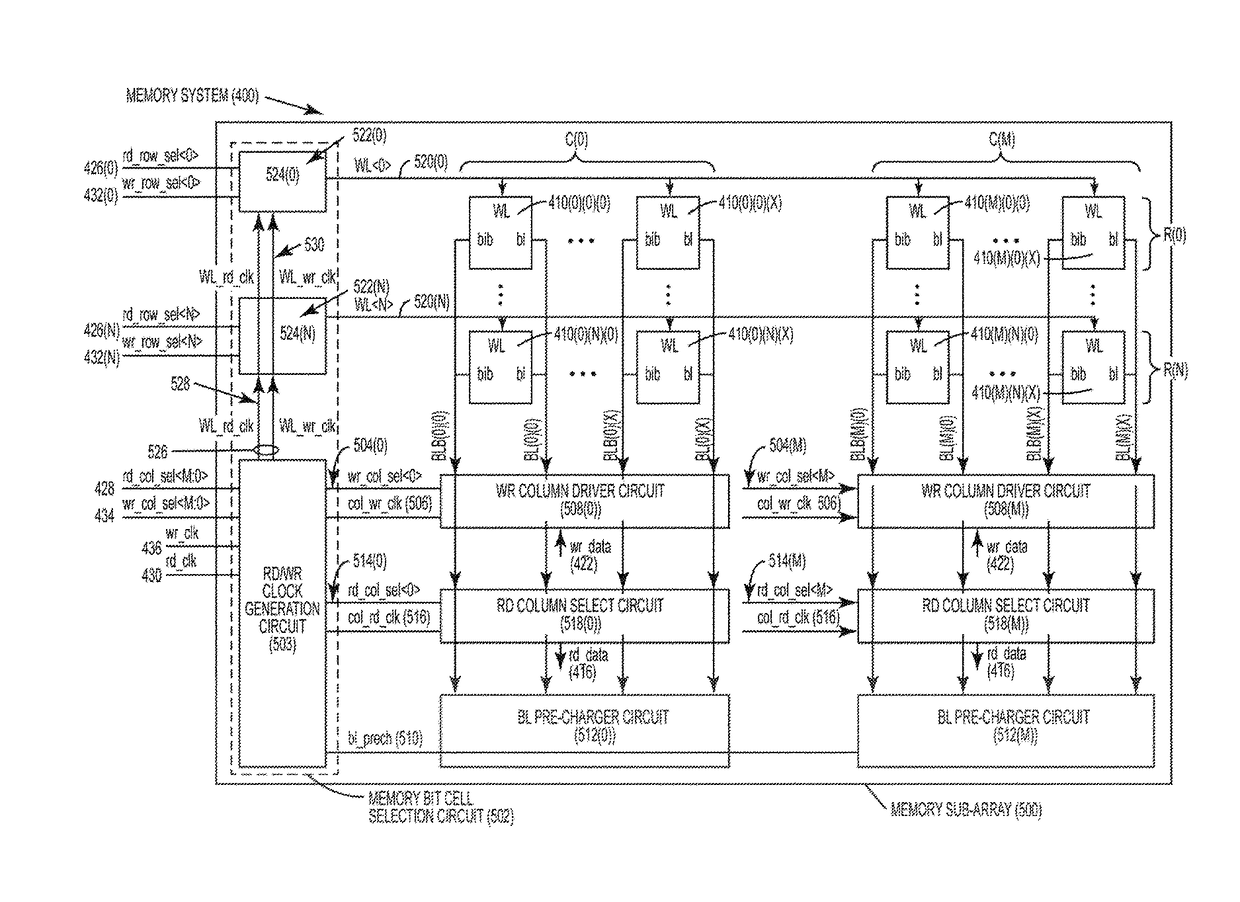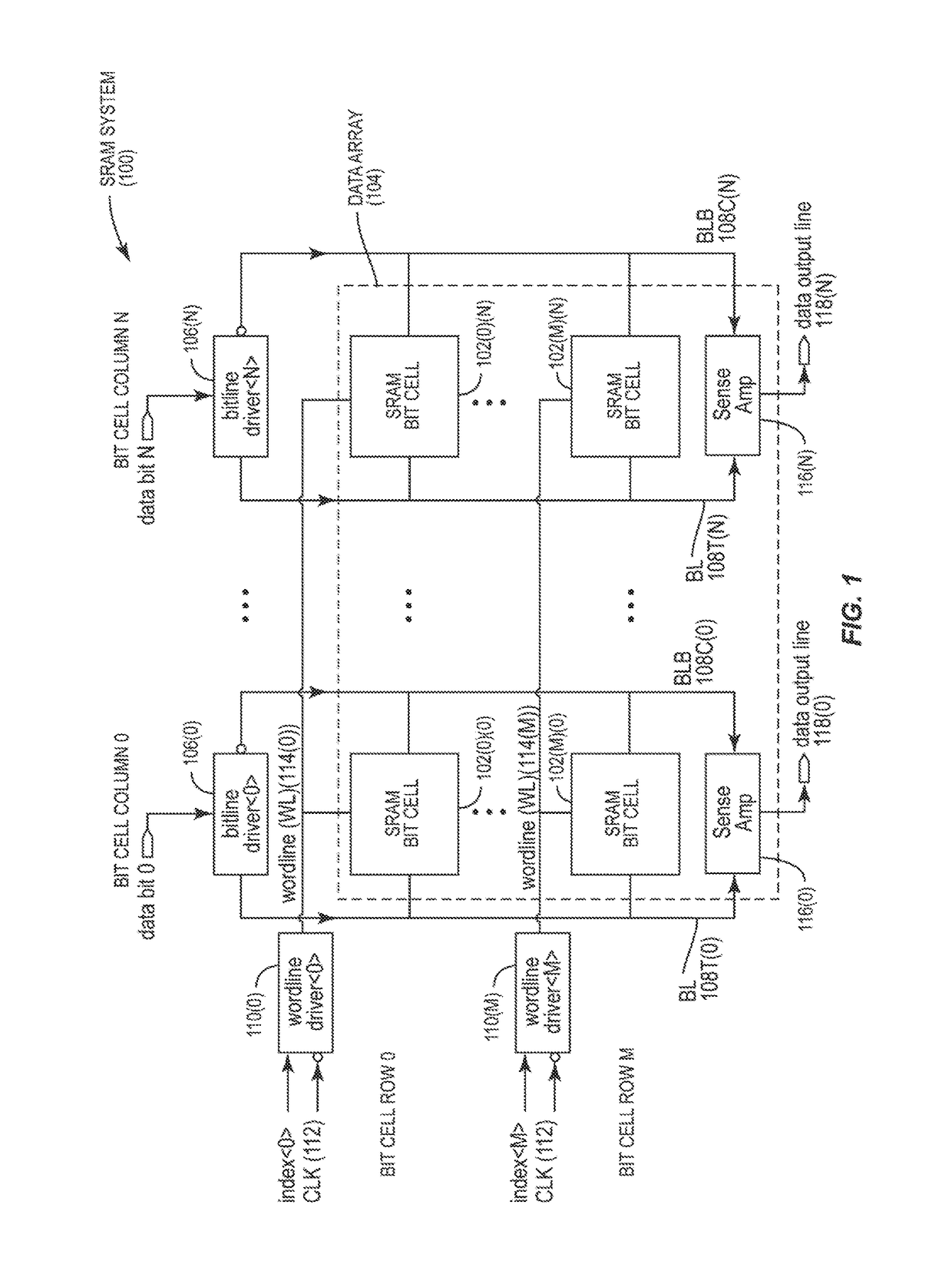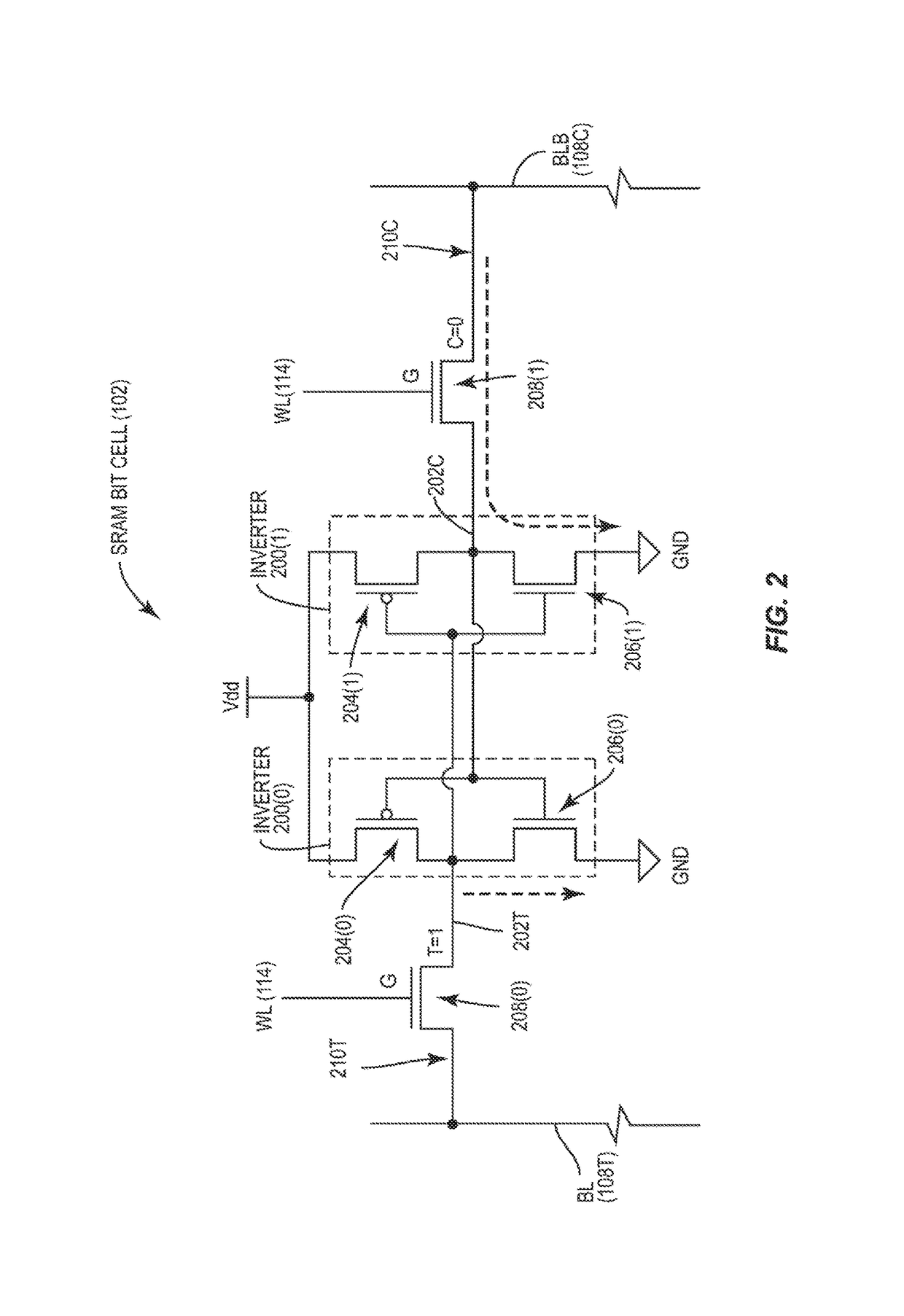Separate read and write address decoding in a memory system to support simultaneous memory read and write operations
a memory system and address decoding technology, applied in the field of memory systems, can solve the problem that multiple memory bit cell rows cannot be selected in the memory array in response to a memory write operation, and achieve the effect of avoiding circuit conflicts, minimizing power, performance and area (ppa) of the memory system
- Summary
- Abstract
- Description
- Claims
- Application Information
AI Technical Summary
Benefits of technology
Problems solved by technology
Method used
Image
Examples
Embodiment Construction
[0025]With reference now to the drawing figures, several exemplary aspects of the present disclosure are described. The word “exemplary” is used herein to mean “serving as an example, instance, or illustration.” Any aspect described herein as “exemplary” is not necessarily to be construed as preferred or advantageous over other aspects.
[0026]Aspects of the present disclosure involve separate read and write address decoding in a memory system to support simultaneous memory read and write operations. By separating read and write address decoding, a memory system can avoid circuit conflicts even if employing single port memory bit cells that only include one port for conducting memory read and write operations. It may be desired to employ single port memory bit cells in the memory system as a non-limiting example to minimize power, performance, and area (PPA) of the memory system.
[0027]In this regard, in exemplary aspects disclosed herein, a memory system includes a memory array compri...
PUM
 Login to View More
Login to View More Abstract
Description
Claims
Application Information
 Login to View More
Login to View More - R&D
- Intellectual Property
- Life Sciences
- Materials
- Tech Scout
- Unparalleled Data Quality
- Higher Quality Content
- 60% Fewer Hallucinations
Browse by: Latest US Patents, China's latest patents, Technical Efficacy Thesaurus, Application Domain, Technology Topic, Popular Technical Reports.
© 2025 PatSnap. All rights reserved.Legal|Privacy policy|Modern Slavery Act Transparency Statement|Sitemap|About US| Contact US: help@patsnap.com



